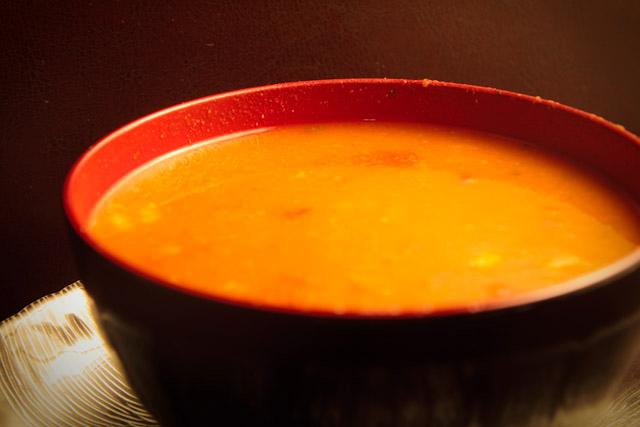
Replacing cream-based soups with broth-based options adds a healthier variation to your daily intake. (MICHAEL DANSER/The Daily Campus) (The Daily Campus)
Students yearning for winter break, seeing family and friends and celebrating holiday traditions are usually not worried about creating a winter break workout plan or counting calories.
So when January rolls around and classes, among numerous other activities, begin, and the weather is cold and rainy, eating healthy can get lost in the chaos, and students often turn to high calorie comfort foods.
Though macaroni and cheese, mashed potatoes and chili may sound like perfect options for a cold winter day, these choices carry major calories and can cause students to feel sluggish and have low energy.
By making simple changes and healthy choices, students can brave the winter months eating healthy and feeling well.
By eliminating processed and fatty foods and exchanging macaroni and cheese and heavy pastas for grains like barley and quinoa, you can feed your body the nutrients it needs while filling up and getting the “comfort” feeling that we love so much.
According to wholefoods.com, “Eating barley can improve many risk factors for cardiovascular disease, including supporting healthy cholesterol levels. Just one cup of cooked barley gives you: Selenium, Niacin, Manganese, 2 mg Iron, 6.2 grams of fiber (soluble and insoluble) and less than 1 gram of fat.”
Also, high calorie comfort dishes can be replaced with hearty salads and soups, which are satisfying on a cold day, but won’t cause the feeling of being weighed down.
By adding chicken or fish, winter fruits and vegetables like apples, oranges and squash, and beans to a salad, you can have a delicious lunch or dinner option. Broth-based soups loaded with vegetables and lean meats are also good for a rainy day.
When it’s cold outside and students are stuck studying or hanging out in dorms or apartments, snacking hits an all-time high. Instead of turning to packaged snack foods full of unhealthy preservatives, or fattening baked goods, there are many tasty, healthy options.
Cutting up fruits and vegetables and adding whole grain crackers and hearty dips like hummus is a more nutritious way to fill up when watching a movie or working on homework.
By replacing the usual fatty and high-calorie comfort foods with fresh and natural ingredients, not only will your body respond and feel better, but you will also have more energy, making that winter weight gain even easier to lose.








